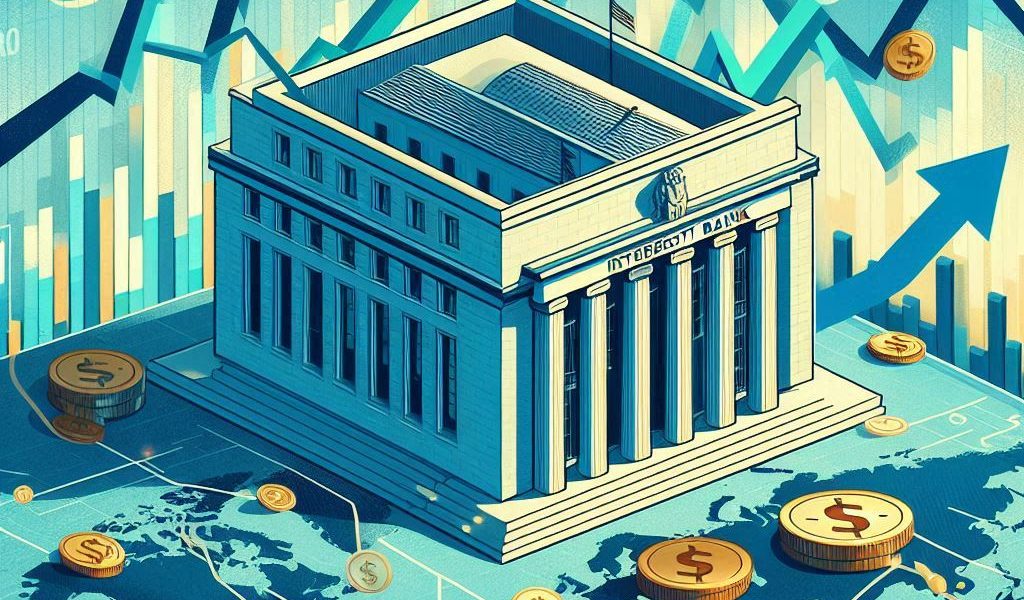Interest rates play a fundamental role in shaping the global economy. Central banks adjust interest rates as a tool to manage inflation, stabilize economic growth, and influence the flow of capital across borders. These changes ripple through markets, affecting everything from consumer spending and business investments to global trade and asset prices. For investors, understanding the dynamics of interest rate changes is essential for navigating economic fluctuations and making informed financial decisions. In this blog, we’ll explore how interest rate changes are shaping global economies and what investors should consider in this evolving economic landscape.
What Are Interest Rates?
Interest rates refer to the cost of borrowing money, expressed as a percentage of the principal. Central banks, such as the Federal Reserve in the United States, the European Central Bank (ECB), and the Bank of England, set benchmark interest rates. These rates influence how much it costs for commercial banks to borrow from the central bank, which then affects the interest rates they offer to businesses and consumers.
Changes in interest rates can have profound effects on inflation, consumer behavior, and economic growth. When interest rates rise, borrowing becomes more expensive, which can reduce consumer spending and business investment. Conversely, when interest rates fall, borrowing becomes cheaper, encouraging spending and investment.
1. The Role of Central Banks in Interest Rate Decisions
Central banks adjust interest rates to achieve specific macroeconomic goals:
- Controlling Inflation: One of the primary goals of central banks is to keep inflation within a targeted range. When inflation rises too quickly, central banks may raise interest rates to reduce borrowing and spending, thus cooling down the economy. Conversely, when inflation is low, central banks may lower rates to stimulate spending and investment.
- Stimulating Economic Growth: In times of economic slowdown or recession, central banks may reduce interest rates to encourage borrowing and investment. Lower interest rates can stimulate consumer demand, boost business investments, and ultimately revive economic growth.
- Maintaining Currency Stability: Central banks may also adjust interest rates to maintain the stability of their national currency. Higher interest rates tend to attract foreign investment, strengthening the currency, while lower rates may lead to currency depreciation.
2. How Interest Rate Changes Impact Global Economies
Interest rate changes affect various aspects of the global economy, from consumer behavior to international trade. Let’s explore some of the key areas influenced by interest rates:
Consumer Spending
When interest rates rise, loans for big-ticket items like homes, cars, and appliances become more expensive. This leads to a decrease in consumer spending, which in turn slows economic growth. On the other hand, when interest rates fall, borrowing becomes cheaper, encouraging consumers to spend more, particularly on large purchases and credit cards.
Business Investment
Businesses are highly sensitive to changes in interest rates. When rates are high, the cost of borrowing to fund new projects, expand operations, or purchase equipment increases. This often leads businesses to delay or scale back investments. However, when interest rates are low, borrowing costs decrease, making it more attractive for companies to invest in growth and innovation.
Stock Market Performance
Interest rate changes can significantly impact the stock market. Rising rates typically signal that the central bank is trying to combat inflation, which can lead to a decline in stock prices. Higher borrowing costs can reduce corporate profits and make stocks less attractive. In contrast, lower interest rates can boost stock prices, as cheaper borrowing leads to increased business activity and higher earnings.
Housing Market
Interest rates play a crucial role in the housing market. When rates are low, mortgages become more affordable, which can lead to an increase in home buying and a rise in property prices. On the other hand, when interest rates rise, mortgage costs increase, which may reduce housing demand and cool down the housing market.
Global Trade
Interest rate changes also affect international trade. When a country raises its interest rates, it can attract foreign capital inflows, strengthening its currency. A stronger currency makes exports more expensive for foreign buyers, potentially reducing demand for the country’s goods and services. Conversely, lower interest rates can weaken the currency, making exports cheaper and more competitive on the global market.
3. Interest Rate Changes in Major Economies and Their Global Impact
Let’s take a look at how interest rate decisions by central banks in major economies affect global markets:
The United States (Federal Reserve)
The U.S. Federal Reserve is one of the most influential central banks globally. Changes in U.S. interest rates can affect the global economy, as the U.S. dollar serves as the world’s primary reserve currency. Higher U.S. interest rates tend to attract foreign capital and strengthen the dollar, while lower rates can lead to a weaker dollar and higher demand for U.S. exports.
The European Union (European Central Bank)
The European Central Bank (ECB) influences interest rates across the eurozone. Decisions made by the ECB can have significant consequences for the broader European economy, especially in countries heavily reliant on exports. A stronger euro, resulting from higher ECB rates, may impact export-driven industries, while lower rates can boost economic activity and exports.
China (People’s Bank of China)
China’s central bank plays a key role in global trade and investment flows. As the world’s second-largest economy, changes in China’s interest rates can influence global supply chains, commodity prices, and capital flows. A tightening of monetary policy by China can reduce demand for commodities, while a loosening of rates may spur increased demand for imports and raw materials.
4. What Does This Mean for Investors?
For investors, interest rate changes present both opportunities and challenges. Here’s how you can navigate interest rate fluctuations:
- Diversify Your Portfolio: Interest rate changes can impact different asset classes in different ways. Stocks may decline when interest rates rise, while bonds may perform better in a low-rate environment. Real estate can also be influenced by interest rate changes, so diversifying your investments is crucial.
- Invest in Interest-Sensitive Assets: Bonds, particularly long-term bonds, tend to benefit from falling interest rates. Dividend-paying stocks can also provide steady income, even during periods of low rates.
- Monitor Central Bank Decisions: Stay informed about the monetary policies of central banks in major economies. Central banks’ interest rate decisions can offer valuable insights into the direction of the global economy and provide clues for adjusting your investment strategy.
Conclusion: Interest Rates and Their Influence on Global Economies
Interest rate changes are a powerful economic tool that central banks use to influence consumer behavior, business investments, and the broader economy. By understanding how these changes shape global markets, investors can better position themselves to manage risk, seize opportunities, and optimize their portfolios in response to shifting economic conditions.




